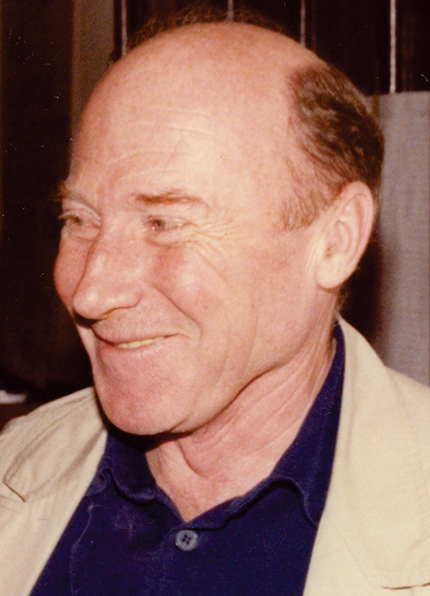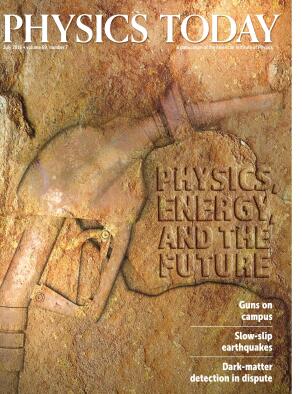Rudolf Haag
DOI: 10.1063/PT.3.3244
German mathematical physicist Rudolf Haag passed away on 5 January 2016 in Fischhausen-Neuhaus, Germany.

Rudolf Haag

Haag’s legacy is his seminal conceptual approach to quantum field theory (QFT). His first groundbreaking contribution, in 1955, to the structural understanding of QFT is known as Haag’s theorem: Although the canonical commutation relations are universal, a system with continuous degrees of freedom possesses an infinite number of inequivalent representations of them, so the choice of representation matters.
As a consequence, the “interaction picture,” despite its success as an approximative scheme, can be valid in an interacting theory only when there is a cutoff. In that respect, QFT proves to be markedly distinct from quantum mechanics.
Haag was born on 17 August 1922 in Tübingen, Germany. Visiting his sister in England in the fall of 1939, Haag was detained as an enemy alien and had to spend World War II in a camp in Canada. He made the best of it by teaching himself physics from books.
After receiving a degree in physics from the Technical University of Stuttgart in 1948, Haag earned his PhD in theoretical physics in 1951 at the University of Munich under Fritz Bopp. He then held postdoctoral positions at the Universities of Munich and Copenhagen and at the Max Planck Institute for Physics in Göttingen. He was a guest professor at the University of Marseille and Princeton University in 1957–59 and a professor at the University of Illinois at Urbana-Champaign in 1960–66. During those 18 years, he laid the foundations for an algebraic approach to QFT that is complementary to Arthur Wightman’s axiomatic setting.
Haag’s reformulation of scattering theory in 1956–57, further elaborated on by David Ruelle, Klaus Hepp, and Huzihiro Araki, mathematically embodied a key aspect of scattering: In terms of particle species and their interactions, the physical interpretation relies only on the localization of measurements and their correlations (“particle tracks”), not on a detailed specification of what has been measured.
That insight, which detached the analysis of QFT from the use of fields and equations of motion, led Haag and Daniel Kastler in 1964 to the formulation of the new general framework. It emphasizes the primary role of algebraic relations that control the causal connections between localized observables; different physical states, though, may require different representations of the same algebra. Algebraic QFT is brilliantly exhibited in Haag’s Local Quantum Physics: Fields, Particles, Algebras (Springer, 1992).
Haag’s approach bore enormous fruit. Soon after he became a professor at the University of Hamburg in 1966, he, Sergio Doplicher, and John Roberts analyzed the general concept of charge and discovered fundamental connections between charge, spin, and statistics. The revelation eventually led to the proof that the charge structure of a QFT uniquely determines its internal symmetries. Whereas the converse is a familiar fact, no version of the result is known in any other approach to QFT.
Haag had a strong intuition for the mathematics appropriate for the subtle issues of quantum physics, and he had studious respect for its implications. A few further contributions illustrate the broad scope of his thinking: his 1962 analysis of the Bardeen-Cooper-Schrieffer model of superconductivity; his 1965 study, with Jorge André Swieca, of the relevance of phase-space properties for the existence of particle states in a QFT; and, with Jan Łopuszański and Martin Sohnius in 1975, the first classification of supersymmetries as symmetries of the scattering matrix.
With Nicolaas Hugenholtz and Marinus Winnink, Haag in 1967 analyzed the thermal equilibrium of infinite quantum systems independent of an approximation by Gibbs states in finite volume. They could completely characterize equilibrium states by the Kubo-Martin-Schwinger condition, and they discovered a hidden structure that was unveiled at the same time by mathematicians Minoru Tomita and Masamichi Takesaki for a large class of states on von Neumann algebras. The structure was later found to also be related to spacetime symmetries—Lorentz boosts and CPT—and to the Unruh effect. For Haag, that conjunction was an indication of a “preestablished harmony” between physics and mathematics.
Haag also took on general relativity in a 1984 article he wrote with Heide Narnhofer and Ulrich Stein on the stability of QFT in curved spacetime and in a 1990 article with Klaus Fredenhagen on the Hawking radiation of a star collapsing into a black hole.
After his retirement from the University of Hamburg in 1987, Haag focused his interest on the concept of an “event” in quantum theory as the transition between a statistical possibility and a fact. Despite his declining health and deteriorating vision, he kept attending conferences and contributing to the scientific discussions.
Haag, with Res Jost, founded Communications in Mathematical Physics in 1965. It became the leading journal for the mathematical study of QFT and many related issues. Haag was its first editor-in-chief and served until 1973.
Among other honors, Haag received the Max Planck Medal of the German Physical Society in 1970 and the 1997 Henri Poincaré Prize of the International Association of Mathematical Physics. Besides Araki and Fredenhagen, Detlev Buchholz, Volker Enss, and Bert Schroer were also some of his students.
Rudolf Haag leaves a great legacy to the mathematical physics community. He will be greatly missed.
More about the Authors
Arthur Jaffe. Harvard University, Cambridge, Massachusetts.
Karl-Henning Rehren. Georg-August University Göttingen, Göttingen, Germany.




